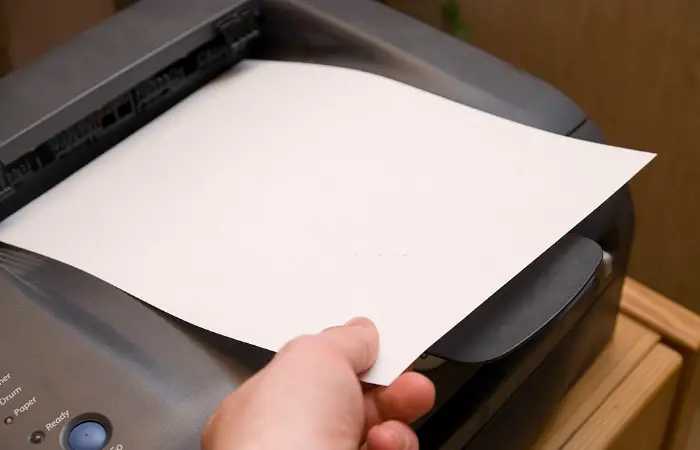When you are looking for a new home printer, it is important to keep in mind what your specific needs are. This will help you narrow down the wide range of printers on the market to find the one that is perfect for you. Here are some factors to consider when choosing a new home printer.
Print quality. This is probably the most important factor to consider when choosing a new printer. Depending on what you plan to use your printer for, you may need different levels of print quality. If you plan to use your printer mainly for text documents, then you won’t need as high of print quality as someone who plans to use their printer for photos or other graphics-heavy documents.
Inkjet or laser?
Inkjet printers are typically more affordable than laser printers and are ideal for general home use. They’re also great for printing photos and can produce high-quality prints. However, they tend to be slower than laser printers and use more ink, making them more expensive to run in the long term.

Laser printers are faster than inkjet printers and are better suited to heavy-duty printing, such as printing large volumes of text documents. They’re also more cost-effective to run, as laser toner lasts longer than inkjet cartridges. However, laser printers can be more expensive to buy upfront.

When choosing a home printer, it’s important to consider your needs and budget. Inkjet printers are a great option for general home use, while laser printers are better suited for heavy-duty printing. If you’re looking for the most cost-effective option, choose a laser printer.
Multifunction printers
A multifunction printer is a printer that can also scan and fax as well as print. They come in both inkjet and laser varieties and are usually called “all-in-ones” or multifunction printers. Home office users will find that an MFP can be a good choice because it consolidates multiple machines into one, taking up less space. And, since they scan and fax as well as print, they can serve as the centerpiece of a home-based business.
All-in-ones come in both inkjet and laser varieties. Inkjet all-in-ones are generally less expensive than laser all-in-ones, but the cost per page is higher. That said, inkjet all-in-ones have come down in price and now offer features that were once the domain of lasers, such as automatic document feeders (ADFs) for scanning multi-page documents.
Photo printers
These printers are designed specifically for high-quality photo printing, and as such, they tend to be quite a bit more expensive than regular printers. They also usually have smaller paper capacities and slower print speeds.
Many of the printers are sold only for dedicated photo or graphic arts use, not general office printing, and have six or more inks. These extra inks expand the color gamut that the printer can reproduce. Some photo printers can print on odd-size paper and panoramic sizes.
The vast majority of home printers use inkjet technology, which creates images by spraying tiny droplets of ink onto paper. Inkjet printers are generally less expensive than laser printers and can print onto a wider variety of media types, including glossy photo paper, vellum, and transparencies.
Speed, resolution, and color claims
It used to be pretty easy for a printer company to make wild claims about how fast their printers were or how many pages an ink or toner cartridge could produce.
PPM stands for “pages per minute,” and it is a measurement of how quickly a printer can print pages. That appears to be straightforward, but PPM may rapidly become complicated. Because printers have quite different PPMs for black and white versus color, it’s usual for many color-focused printers to provide two separate PPMs. PPM isn’t really significant for home printers unless you’re working on a tight deadline or need to print a large number of pages at once. The average black-and-white PPM is 15 to 20.
DPI stands for “dots per inch,” which is the number of dots of ink that a printer can apply to a square inch of paper. This spec is important for determining a printer’s ability to produce high-resolution, high-detail images. It is, however, a little out of date: printing technologies and software can improve a printed image’s resolution without affecting the DPI, so don’t let it be the deciding factor.
The duty cycle is the amount pages of a printer can fairly be expected to print per month. To avoid excessive wear and tear on your printer, keep your estimated number of pages per month far below this figure. It’s a crucial number in a busy office with a lot of people Use these specifications as a starting point for comparing devices, but keep in mind that they aren’t all-encompassing, especially if you’re seeking anything specific.
Duplexing (two-sided printing or scanning)
One feature that’s becoming very common and that we consider a big plus is automatic duplexing. That means the printer can automatically print or scan both sides of a page. This can be a big time-saver if you do a lot of two-sided printing, and it can also reduce paper usage.
Wireless printing and connectivity options
Another nice feature to have in an all-in-one is the ability to print wirelessly from your computer, smartphone, or tablet. Most printers these days use Wi-Fi, although some also support Bluetooth or NFC (near field communication), which lets you connect your device.
Paper handling
Check the specs carefully to make sure a given printer can handle the paper stock you want to use, including cards, labels, transparencies, and photo paper. Most printers also come with a multipurpose feed that can handle specialty stock one sheet at a time.

Printers for the modern paperless home
They looking for a new printer for an all-in-one device that can not only print documents but also scan and copy them. Home users have a few different types of printers to choose from when it comes to all-in-one devices, including inkjet, laser, and LED printers.
An inkjet printer is typically the best choice for the home user. Inkjet printers are less expensive than laser printers and have the ability to print in color, which is ideal for photos and other graphics. Inkjet printers also tend to be smaller and more compact than laser printers, making them a good choice for those with limited space. The answer to the question “What printer should I buy?” varies depending on the individual.
A laser printer in your home or company may be necessary if you print regularly. An inkjet printer is likely your best pick if you work from home, print less frequently, and print images. Thanks to a better of options at various price ranges, it’s easier than ever to find the appropriate printer for your unique needs. I hope you find this article helpful if you have any questions please feel free to post in the comment section.

I am Mark Luke and I’m the founder of PrinterBio.com. I started this site because I was tired of dealing with the problems that come with using printers. I wanted to help others avoid the time and frustration I had, So I started this site based on my own experience & what I’ve learned from other professionals. My goal is to help you find the right printer and easily solve any problems you may have with your printer.